A pop-up is one of the strategies to convert traffic into sales revenue on Shopify. It also helps keep customers engaged and on the site longer, like with exit-intent pop-ups. According to Optimonk, the average pop-up conversion rate is 11.09%. Pop-ups are commonly seen in most Shopify stores. There are different types of pop-ups for various purposes, and it’s important to understand their functions to set them up properly on your site. Installing a pop-up is straightforward—you can do it via apps or with coding. Want to explore everything in detail? Let’s go through our article.
“Pop-ups have a reputation for being naff, but when designed beautifully and presented in a way that isn’t irritating – they can be very effective. Even luxury brands like Vivienne Westwood are now getting in on the game. In my opinion they are an essential tool for converting cold traffic into a more fruitful relationship – especially while ad costs remain high. The challenge is getting the balance right.”
Scott Dooley – Kahunam Founder
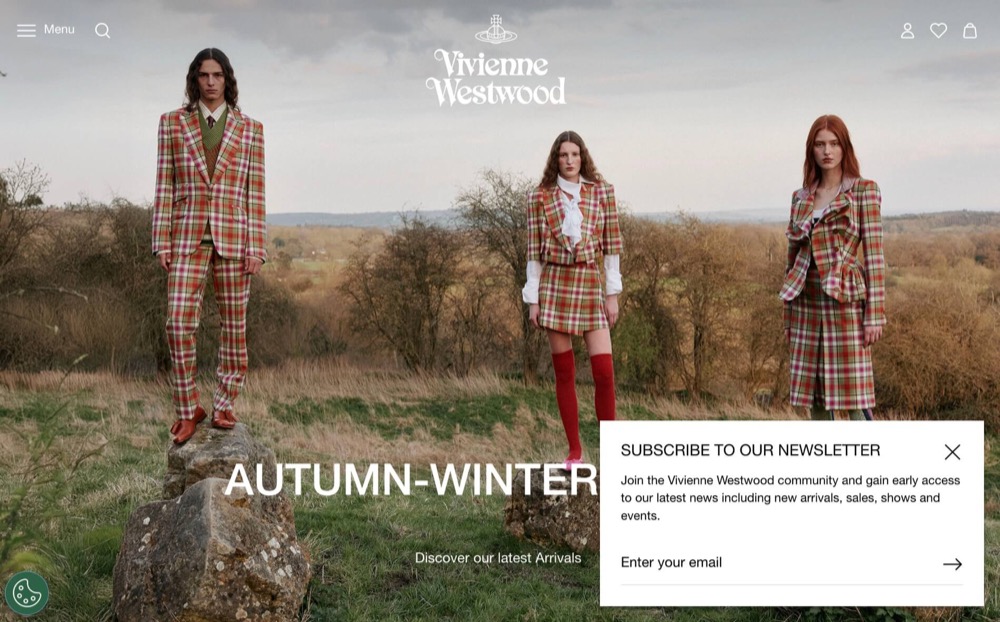
Why do you need a pop-up
Increasing sales is the ultimate goal of this tactic. However, to achieve this, it plays several important roles in supporting the marketing and sales cycles, including:
- Pop-ups can ask visitors to sign up for your newsletter or special offers, which helps you build your email list.
- They can announce special sales, discounts, or promotions to encourage people to buy more.
- By showing important offers, pop-ups can motivate visitors to complete their purchase or take another action.
- They can remind visitors about items left in their cart and offer a discount to help close the sale.
- Pop-ups can quickly share updates, like new products or important information about your store.
- When used wisely, pop-ups can keep visitors engaged by providing useful info at the right moment.
Type of popular pop-ups
As mentioned above, there are various types of pop-ups to choose from. Each type can tap into different aspects of customer psychology to encourage purchases on your Shopify store.
Discount popups
It is all about grabbing attention with special offers right when visitors land on your site. By offering a discount or promo code, you’re giving people a reason to make a purchase now rather than later. The psychology behind this is pretty straightforward: people love getting a good deal and the limited-time nature of these offers creates a sense of urgency, pushing them to act quickly.
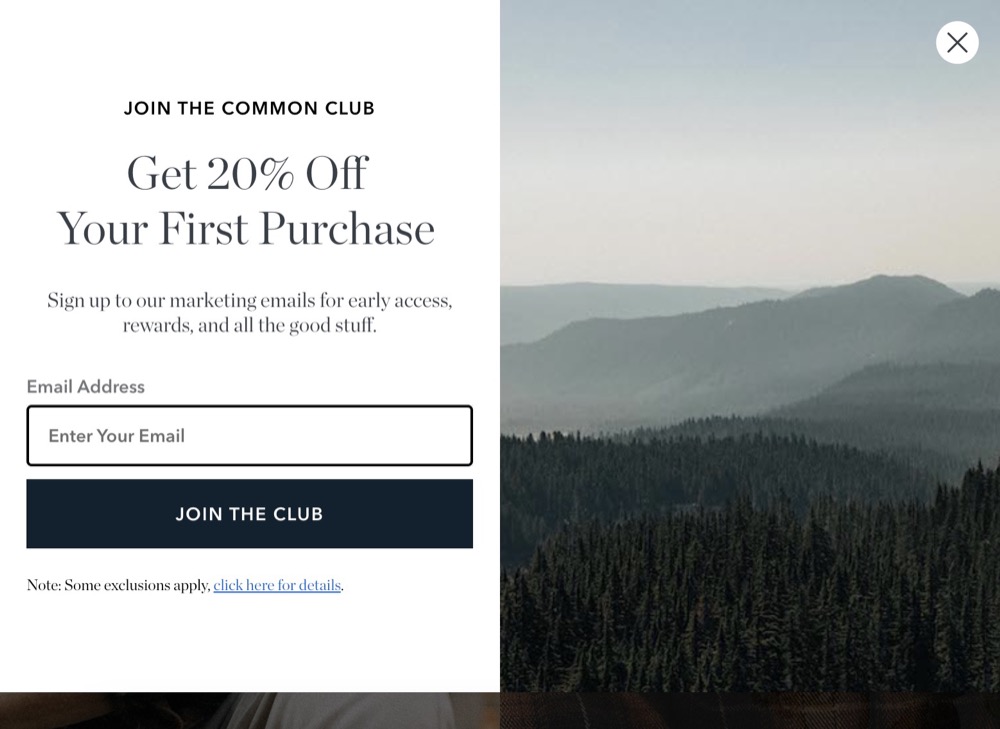
Welcome popup
To greet new visitors with a friendly introduction or an enticing offer, like a discount or freebie. This helps convert first-time visitors into customers by making them feel valued from the get-go. The idea is to make a great first impression and create a warm, inviting atmosphere that encourages people to stick around and shop.
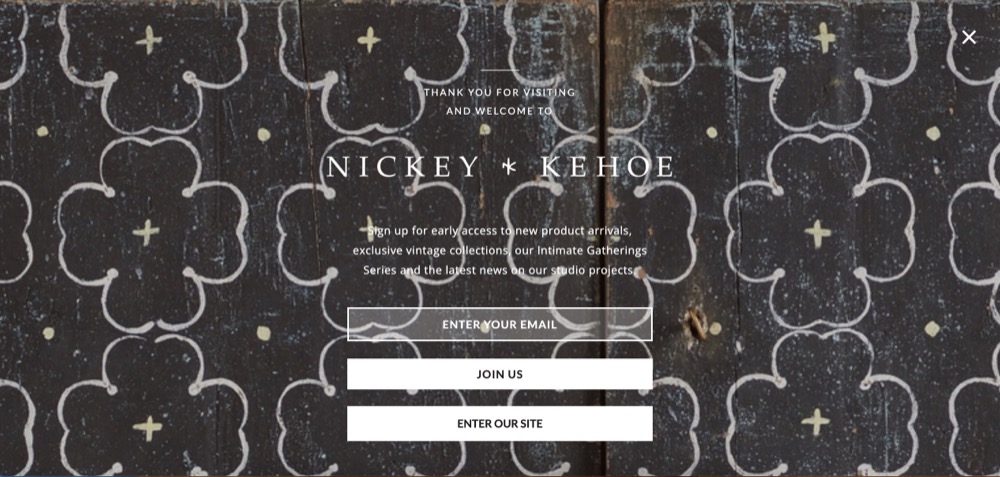
Email popup
It encourages visitors to sign up for your newsletter or mailing list, usually in exchange for a discount. This is a way to build a contact list for future marketing. The psychological trick here is reciprocity: if you offer something valuable upfront, people are more likely to give you their email address in return.
SMS popup
It works similarly to email popups but focuses on collecting phone numbers for text message marketing. This approach allows for more direct, personal communication. The immediacy of SMS messages means people are more likely to see and act on your offers quickly, tapping into the personal and urgent nature of text messages.

Survey popup
Created to ask visitors for their feedback or opinions, often in exchange for a reward like a discount. This helps you understand your customers better and improve their experience. The psychology here is about involvement: when people feel like their opinions matter, they’re more likely to engage and share their thoughts.
Spin-to-win popup
The role of it is to add a fun, game-like element to your site. Visitors spin a wheel for a chance to win discounts, free products, or other prizes. This interactive approach not only entertains but also encourages visitors to provide their contact details or make a purchase. The excitement and element of chance make people more eager to participate.
Upsell popup
It is to suggest additional products or upgrades related to what visitors are already interested in. For example, if someone is buying a camera, the popup might suggest lenses or accessories. This can boost the average order value by making relevant suggestions at the right time. The psychological angle is to enhance the purchase with added value, which can be very appealing.

Countdown timer popup
The popup shows a ticking clock for a limited-time offer. The idea is to create a sense of urgency by making visitors feel like they need to act fast before the deal expires. This taps into the fear of missing out (FOMO) and can push people to complete their purchase more quickly.
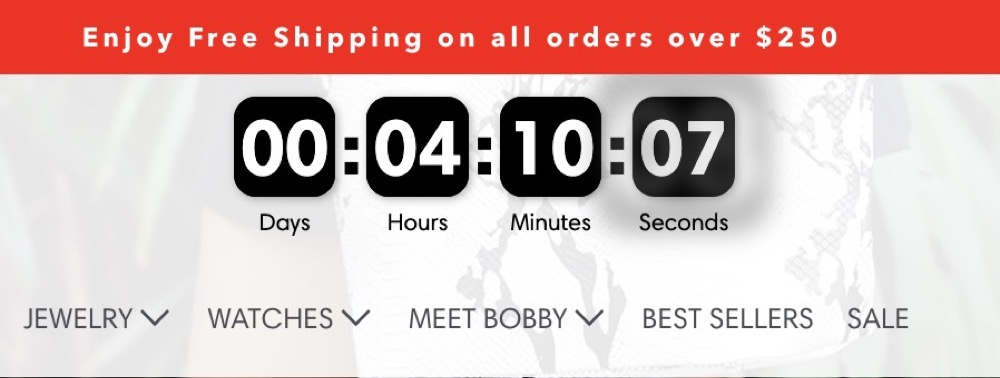
Exit-intent popup
The type of popup that appears when a visitor is about to leave your site. They often offer a final incentive to keep them from leaving or ask for feedback. This last-minute effort aims to capture potential sales or gather valuable insights right before the visitor exits. It’s all about making a final attempt to engage before they go.
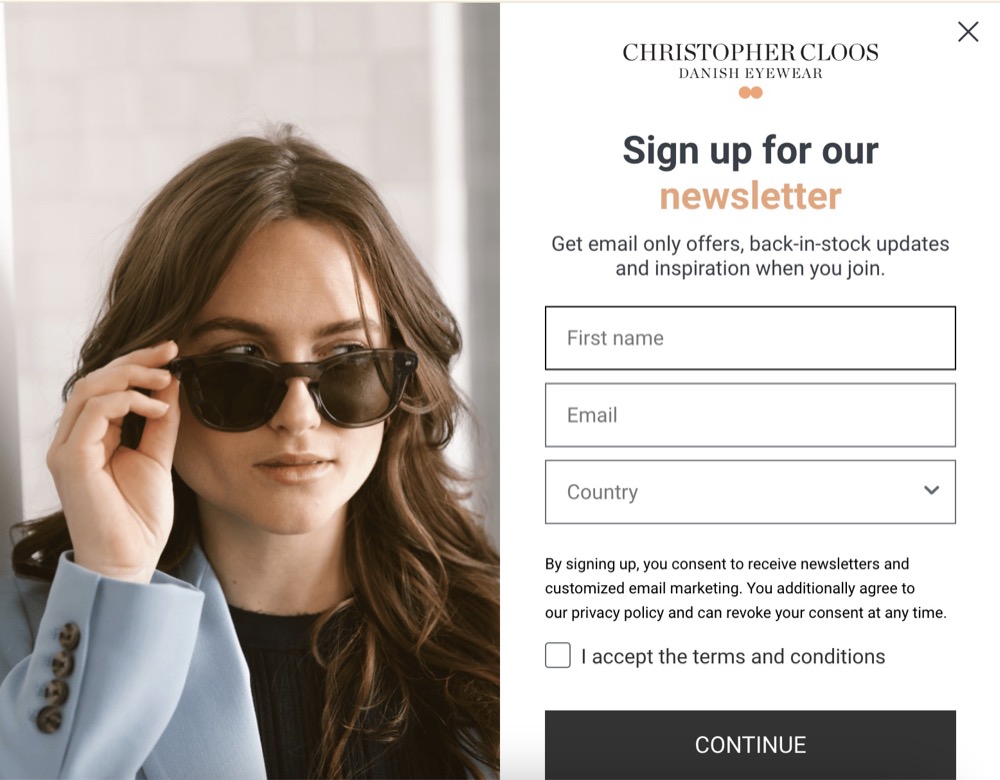
Loyalty program popup
It helps promote your store’s rewards or loyalty program. They encourage customers to join and earn rewards for repeat purchases. This approach taps into the desire for rewards and recognition, making customers feel appreciated and more likely to return for future purchases.
New product announcement popups
Site owners create it to highlight new arrivals or product launches. They generate excitement and drive immediate interest by letting visitors know about the latest offerings. The novelty of new products can spark curiosity and prompt visitors to explore and buy.
Referral program popup
One of its benefits is to encourage customers to refer friends and family to your store in exchange for rewards. This leverages social proof, as people are more likely to trust recommendations from friends. The added incentive of rewards makes it more appealing for customers to share your store with others.
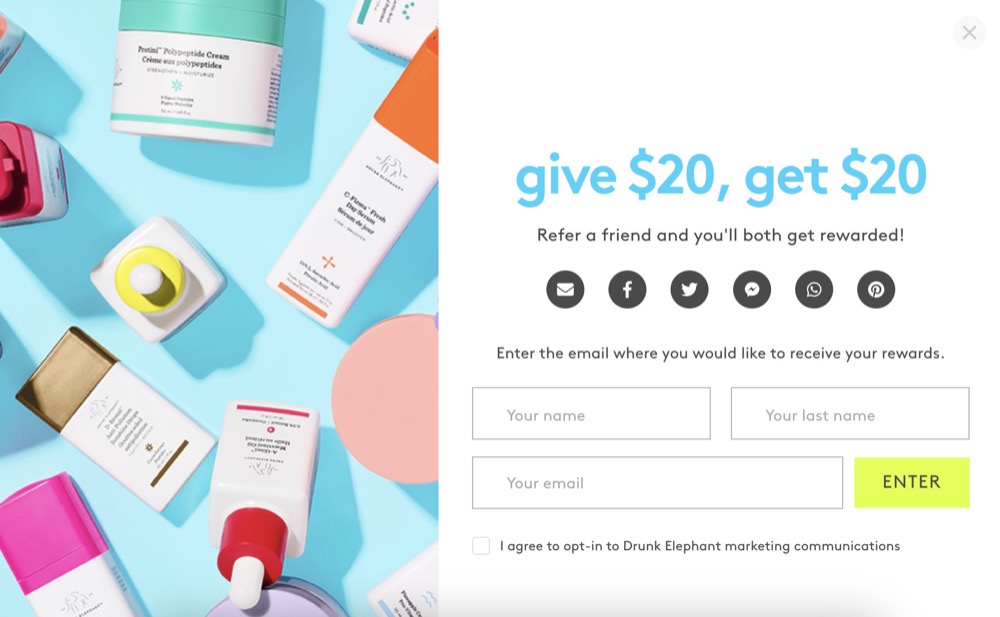
Feedback or review popup
The popup asks customers for their opinions or reviews after a purchase, often offering a small reward. This approach values their input and can lead to valuable insights and positive reviews. The principle of reciprocity—offering something in return for their feedback—makes them more willing to participate.
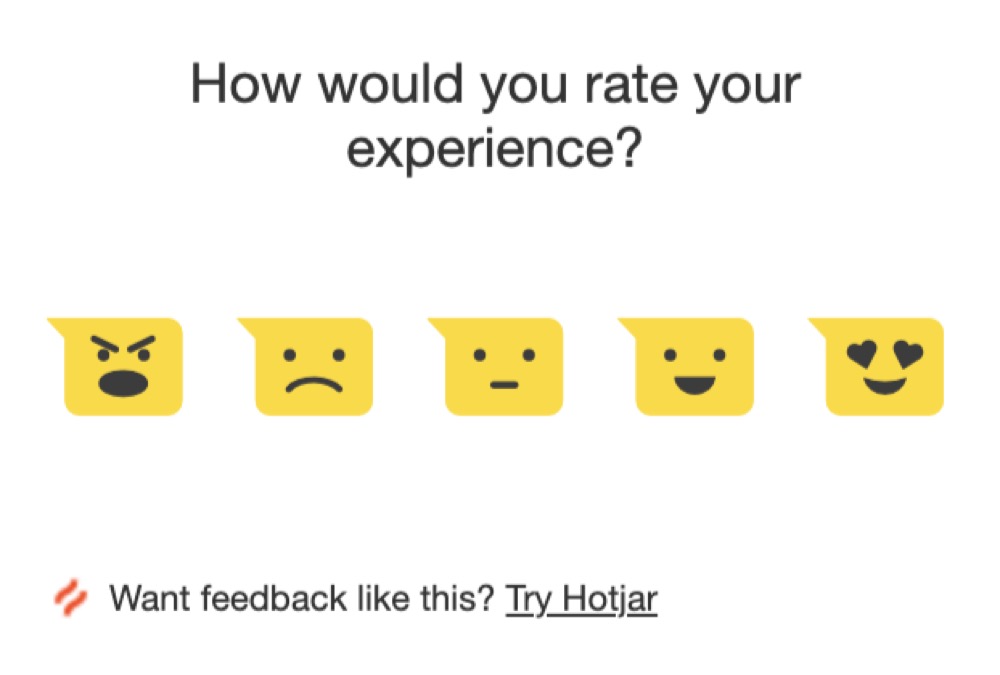
Geo-targeted popup
It’s very common to show offers or information based on the visitor’s location. This makes promotions more relevant to where they are, whether it’s a local sale or location-specific offer. By tailoring the experience to their geographic location, you increase the chances of engagement and conversion.
How to set up a pop up
With third-party app
This method is the easiest way to add a pop-up to your Shopify store, and it doesn’t require any coding.
Step 1: Choose a Pop-Up App
Go to the Shopify App Store and pick a pop-up app that fits your needs. Some good options include:
Step 2: Install the Pop-Up App
Install the app you chose by following the prompts in the app store. This is usually just a few clicks.
Step 3: Set Up Your Pop-Up
Once the app is installed, you can start setting up your pop-up based on the configuration of selected app.
- Customise how your pop-up looks. You can change colors, fonts, and images to match your store’s style.
- Decide when and where the pop-up will appear on your site. For example, you might want it to show up after a visitor spends a certain amount of time on your site or when they’re about to leave.
- Enter the message or offer you want to show in the pop-up.
- Check how your pop-up looks and works by previewing it. Once you’re happy with it, publish the pop-up so it starts showing up on your site.
FAQ
Can I integrate my pop-ups with my email marketing service?
Yes, many Shopify pop-up apps integrate with popular email marketing services like Mailchimp, Klaviyo to automatically sync new email subscribers.
Will pop-ups affect my site’s loading speed?
While pop-ups can add a small amount of extra load time, most Shopify pop-up apps are optimised to minimize any impact on your site’s performance. Always choose reputable apps and monitor your site’s speed.
How can I disable or remove a pop-up from my Shopify site?
You can disable or remove a pop-up by accessing the settings in the pop-up app you are using. Most apps allow you to easily deactivate or delete specific pop-ups from their dashboard.
Are there any legal considerations when using pop-ups?
Yes, ensure your pop-ups comply with privacy laws and regulations, such as GDPR and PECR/ePrivacy, by including necessary disclaimers and obtaining consent for email subscriptions.





